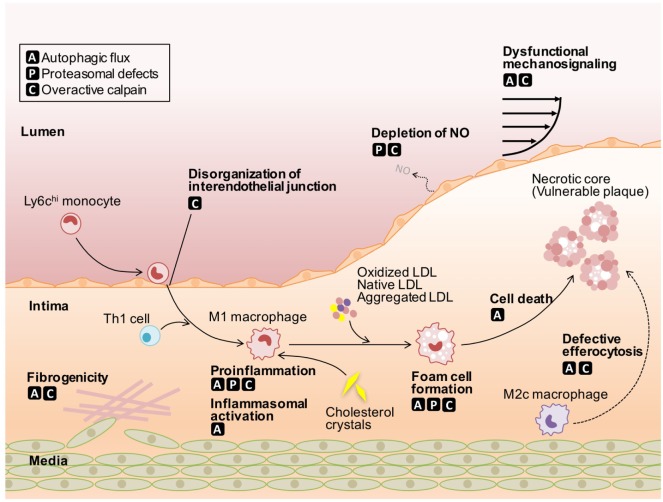Figure 1.
Roles of defective protein catabolism in the pathogenesis of atherosclerosis. Autophagic flux leads to insufficient mechanosignaling in endothelial cells (ECs), impaired phenotypic conversion in vascular smooth muscle cells (VSMCs), proinflammatory actions in macrophages, and defective efferocytosis, thereby accelerating the onset of atherosclerosis. Proteasomal defects induce the depletion of nitric oxide in ECs and harmful proinflammatory responses in macrophages, despite protecting cells from apoptotic and non-apoptotic cell death. Overactivation of conventional calpains leads to impaired EC integrity, VSMC phenotypic conversion, and increased macrophage atherogenicity. Calpain-6 contributes to efferocytic pathways in macrophages. LDL, low-density lipoprotein; NO, nitric oxide.

